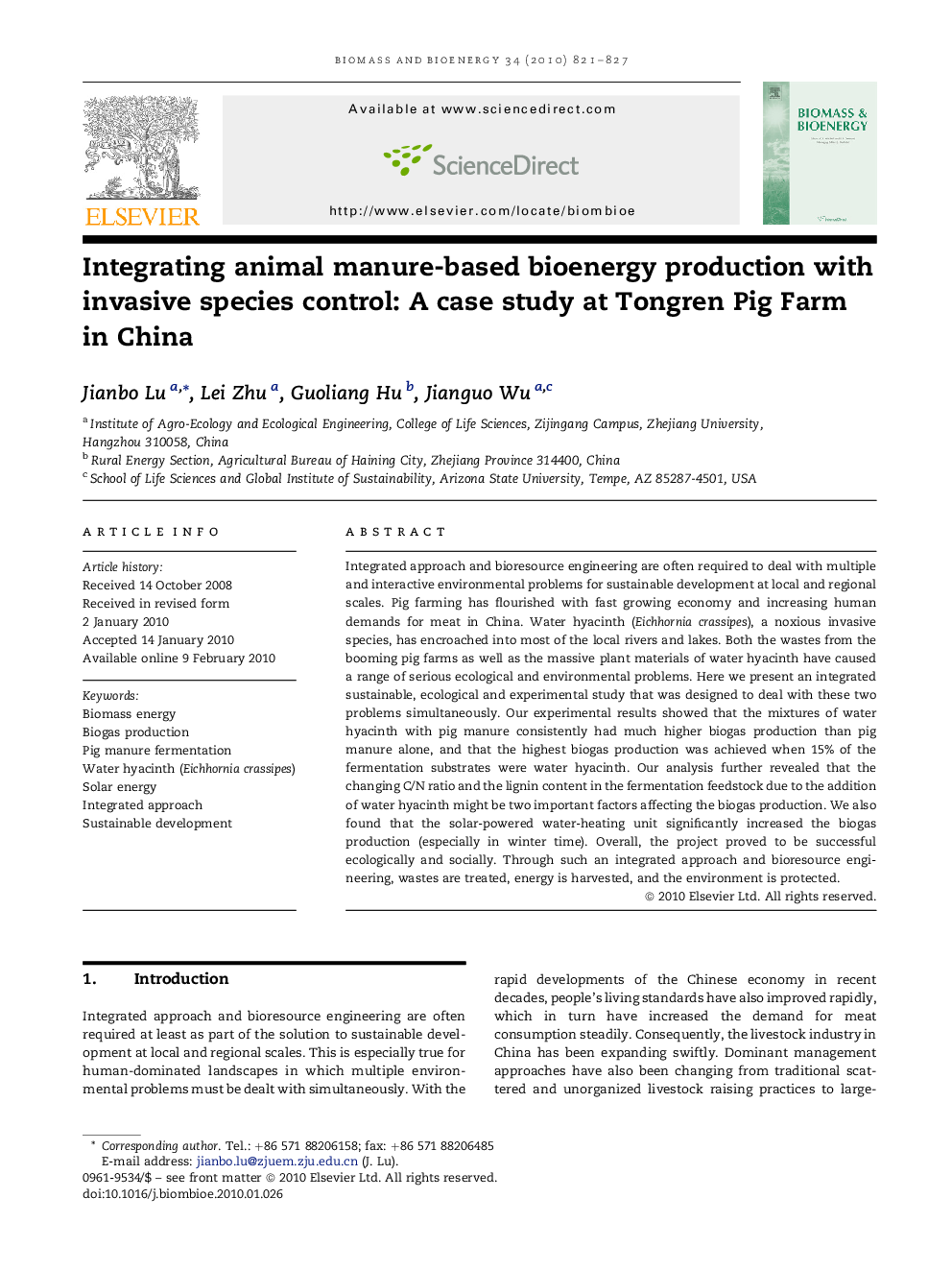| Article ID | Journal | Published Year | Pages | File Type |
|---|---|---|---|---|
| 677815 | Biomass and Bioenergy | 2010 | 7 Pages |
Integrated approach and bioresource engineering are often required to deal with multiple and interactive environmental problems for sustainable development at local and regional scales. Pig farming has flourished with fast growing economy and increasing human demands for meat in China. Water hyacinth (Eichhornia crassipes), a noxious invasive species, has encroached into most of the local rivers and lakes. Both the wastes from the booming pig farms as well as the massive plant materials of water hyacinth have caused a range of serious ecological and environmental problems. Here we present an integrated sustainable, ecological and experimental study that was designed to deal with these two problems simultaneously. Our experimental results showed that the mixtures of water hyacinth with pig manure consistently had much higher biogas production than pig manure alone, and that the highest biogas production was achieved when 15% of the fermentation substrates were water hyacinth. Our analysis further revealed that the changing C/N ratio and the lignin content in the fermentation feedstock due to the addition of water hyacinth might be two important factors affecting the biogas production. We also found that the solar-powered water-heating unit significantly increased the biogas production (especially in winter time). Overall, the project proved to be successful ecologically and socially. Through such an integrated approach and bioresource engineering, wastes are treated, energy is harvested, and the environment is protected.
